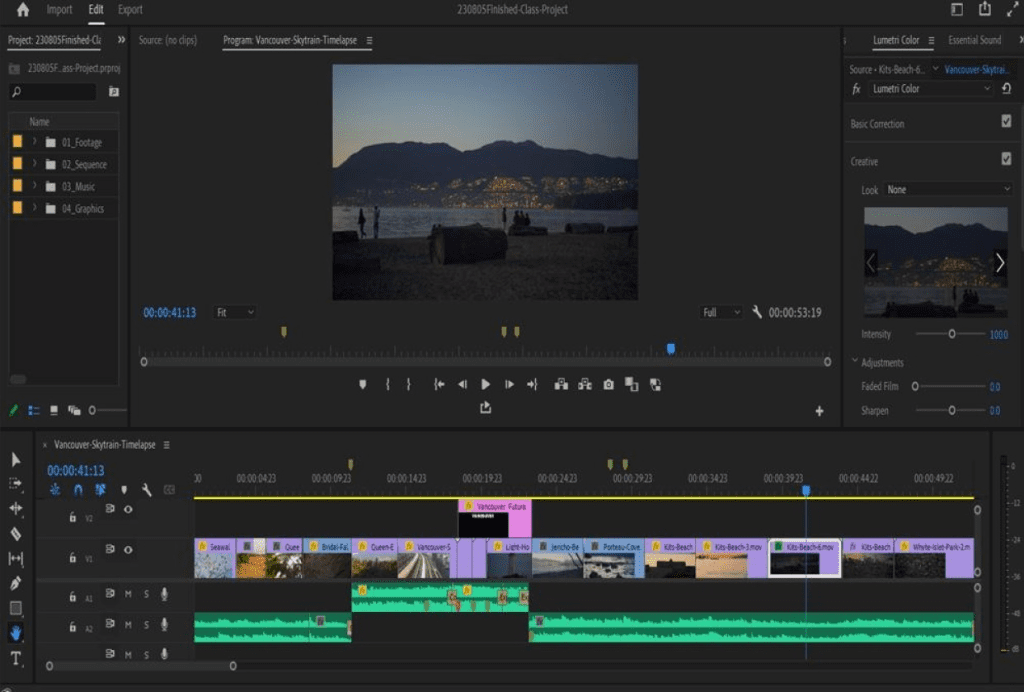
In the realm of digital content creation, Adobe’s suite of video editing tools stands as a cornerstone, empowering creators to transform raw footage into polished masterpieces. Behind the sleek interface and powerful features lies a complex set of mechanics that enable users to manipulate, enhance, and assemble video content with precision and creativity. Let’s delve into the inner workings of Adobe’s video editing tools and explore the fundamental principles that drive their functionality.
The Foundation: Timeline-Based Editing
At the core of Adobe’s video editing tools, such as Premiere Pro, lies the concept of timeline-based editing. This foundational principle allows users to arrange video and audio clips along a chronological timeline, providing a visual representation of the project’s structure. By organizing content in this manner, editors can precisely control the timing, sequence, and arrangement of individual elements, shaping the narrative flow of the final video.
Importing and Organizing Assets
Before the editing process begins, users must import raw media assets into the editing software. Adobe’s video editing tools support a wide range of file formats, including video clips, audio tracks, images, and graphics. Once imported, these assets are organized within the software’s project panel, where they can be easily accessed and manipulated throughout the editing process. Adobe’s intuitive interface allows users to categorize and label assets, streamlining the organization and management of media content.
Editing Tools and Techniques
Adobe’s video editing tools offer a comprehensive array of editing tools and techniques to transform raw footage into polished productions. These tools include:
1. Cutting and Trimming: Editors can trim video and audio clips to remove unwanted sections or refine the timing of specific segments. Adobe’s editing tools provide intuitive methods for performing precise cuts and adjustments, such as the razor tool and trim handles.
2. Transitions and Effects: Adobe’s video editing tools offer a diverse selection of transitions and effects to enhance visual storytelling. From simple fades and dissolves to complex animations and compositing effects, users can apply a variety of creative effects to seamlessly transition between scenes and add visual interest to their projects.
3. Color Correction and Grading: Adobe’s video editing tools provide robust color correction and grading capabilities, allowing users to adjust the color, contrast, and saturation of their footage to achieve the desired look and feel. Advanced features such as color wheels, curves, and scopes enable precise control over every aspect of the image’s color and tone.
4. Audio Editing: Adobe’s video editing tools include powerful audio editing features, allowing users to mix, balance, and enhance audio tracks to complement the visual elements of their projects. With tools for noise reduction, audio leveling, and sound effects, editors can ensure that their videos sound as polished as they look.
Integration and Workflow Efficiency
One of the key strengths of Adobe’s video editing tools lies in their seamless integration within the Adobe Creative Cloud ecosystem. Users can easily import assets from other Adobe applications, such as Adobe Photoshop and Adobe After Effects, allowing for a smooth and efficient workflow. Furthermore, Adobe’s cloud-based infrastructure enables collaborative editing, allowing multiple users to work on a project simultaneously and share assets in real-time.
Conclusion
In summary, Adobe’s video editing tools offer a comprehensive suite of features and functionalities designed to empower creators to bring their creative visions to life. By leveraging timeline-based editing, intuitive tools and techniques, and seamless integration within the Adobe Creative Cloud ecosystem, users can efficiently manipulate, enhance, and assemble video content with precision and creativity. Whether editing a short film, a promotional video, or a documentary, Adobe’s video editing tools provide the foundation for crafting compelling visual narratives that captivate audiences and inspire creativity.

